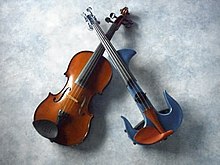Many of the arts can be learned easily through the diverse outlets available through the digital age, whether it be Youtube, Adobe, Paint, Garage Band, or something else. An argument could be made that this means that traditional arts education is unnecessary but this is not true.
The problem with these digital learning resources is that there is no feedback, no personal criticism, which is essential for learning.
Math tests would be useless if there was no one to correct them and give the solutions. Retailers are constantly seeking feedback from their customers because without it they cannot learn how to improve their services. This is why it is essential for artists to be critiqued by someone and why tradition arts education still has a place in schools today.
Students of the arts have been effectively learning this way for years.
An example of this comes from a BYU student who has studied the violin and viola for about 20 years.
“I could practice something by myself for hours and still make mistakes but after just a short period with my teacher, she would be able to help me play it correctly by talking to me, changing my tempo, physically changing the way I was playing, or some other technique she had learned over the years.”
The digital age is expanding interest and lowering the cost of learning the arts but it does not have to be the end of traditional arts education. On the contrary, the digital age should lead to more students being interested in learning the arts and therefore should encourage them to embrace traditional arts education.



No comments:
Post a Comment